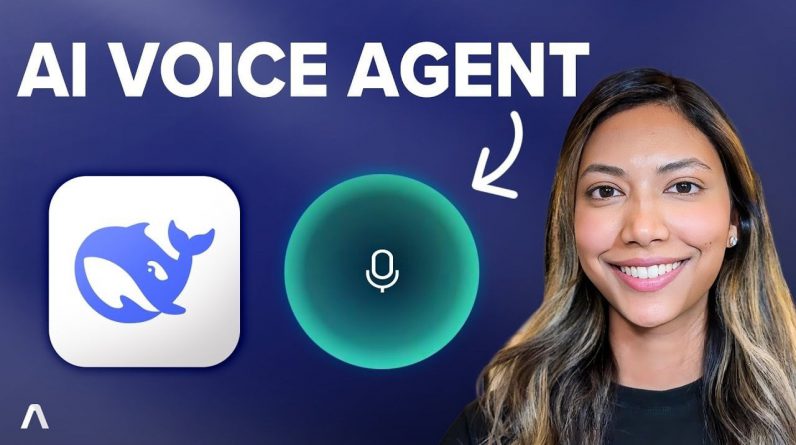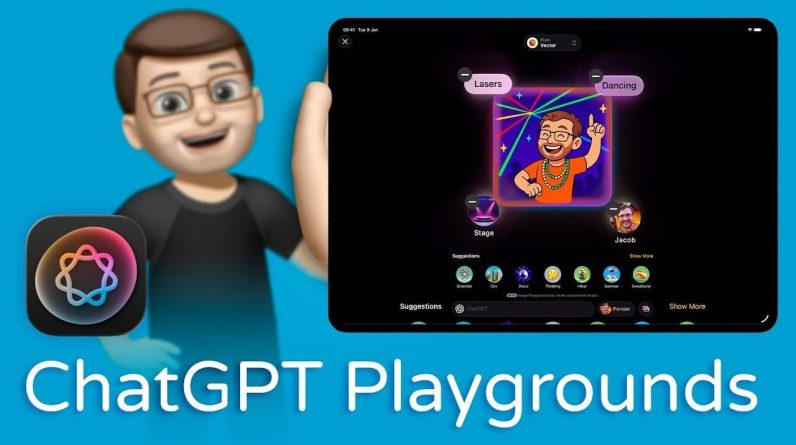
Have you ever wished you could have an AI voice assistant that not only understands you but also explains its reasoning, like a thoughtful conversation partner? Whether you’re navigating a busy schedule, planning a trip, or simply curious about a topic, the idea of an AI that can provide clear, logical responses feels like a fantastic option. Fortunately, with advancements in AI technology, building such a system is no longer a distant dream. Enter the DeepSeek R1 model—an innovative tool designed to reason, explain, and adapt in real time. If you’ve ever felt intimidated by the technical side of AI, don’t worry—this guide will walk you through the process step by step, making it approachable and achievable.
In this tutorial by AssemblyAI, you’ll learn how to create your own AI voice agent using Python and the DeepSeek R1 model. What sets this model apart is its unique ability to explain its “Chain of Thought,” making sure its responses are not just accurate but also transparent and easy to follow. By combining tools like AssemblyAI for speech-to-text, Eleven Labs for text-to-speech, and a few other key technologies, you’ll be able to bring your AI assistant to life. Whether you’re a developer looking to expand your skills or simply someone curious about AI, this project offers an exciting opportunity to explore the intersection of technology and human-like interaction.
What Makes DeepSeek R1 Stand Out?
TL;DR Key Takeaways :
- The DeepSeek R1 model is a innovative AI reasoning system with a “Chain of Thought” feature, allowing step-by-step explanations for enhanced transparency and adaptability.
- Key technologies required include AssemblyAI for speech-to-text, Eleven Labs for text-to-speech, PortAudio for audio streaming, and Python for integration and workflow management.
- Building the AI voice agent involves configuring the DeepSeek R1 model, installing necessary libraries, setting up API keys, and developing a Python class to manage transcription, reasoning, and audio output.
- The real-time transcription workflow integrates speech-to-text, AI response generation, and text-to-speech conversion to deliver seamless, intelligent, and interactive audio responses.
- The AI voice agent can handle complex tasks, such as providing travel recommendations, while explaining its reasoning and maintaining conversational context for meaningful interactions.
The rapid evolution of artificial intelligence has made it increasingly accessible to develop AI-driven voice agents. With the DeepSeek R1 model, you can create a highly capable system that excels in reasoning, explaining its thought process, and responding in real time.
The DeepSeek R1 model is a innovative AI reasoning system designed to handle complex problem-solving tasks with precision. Its defining feature, the “Chain of Thought” mechanism, enables the model to explain its reasoning step-by-step. This transparency fosters trust and allows the model to refine its conclusions when needed. These attributes make DeepSeek R1 particularly well-suited for applications that demand accuracy, adaptability, and clear communication. Whether used in customer service, education, or personal assistance, the model’s reasoning capabilities set it apart from other AI systems.
Technologies You’ll Need
To successfully build your AI voice agent, you’ll need to integrate several tools and technologies. These components work together to enable speech recognition, AI reasoning, and audio playback:
- AssemblyAI: A real-time speech-to-text API that transcribes spoken input into text for processing.
- Eleven Labs: A text-to-speech API that converts AI-generated responses into natural-sounding audio output.
- PortAudio: An audio streaming library that handles input and output on Linux and Mac systems, making sure smooth audio processing.
- Python: The programming language used to integrate all components and manage the workflow efficiently.
- Virtual Environment: A Python environment to isolate dependencies and streamline project management, making sure compatibility across tools.
How to Build AI Voice Agent With DeepSeek R1
Browse through more resources below from our in-depth content covering more areas on DeepSeek R1 AI Model.
Steps to Build Your AI Voice Agent
Creating an AI voice agent involves several key steps, each of which contributes to the overall functionality of the system. Here’s how to proceed:
1. Configure the DeepSeek R1 Model
Begin by downloading the DeepSeek R1 model through Ollama, a platform that assists AI model configuration. This step ensures you have access to the model’s advanced reasoning and problem-solving capabilities.
2. Install Required Libraries
Install the necessary Python libraries for AssemblyAI, Eleven Labs, and Ollama. These libraries provide the APIs and tools required for speech-to-text transcription, text-to-speech conversion, and seamless integration with the DeepSeek R1 model.
3. Set Up API Keys
Obtain API keys for AssemblyAI and Eleven Labs, then configure them in your project. These keys authenticate your access to the respective services, allowing smooth communication between your application and the APIs.
4. Develop the AI Voice Agent
Create a Python class to manage the core functionalities of your AI voice agent. This class will handle the following tasks:
- Real-time transcription of speech input using AssemblyAI.
- Response generation using the DeepSeek R1 model’s reasoning capabilities.
- Conversion of text-based responses into audio output via Eleven Labs.
Understanding the Real-Time Transcription Workflow
The transcription workflow forms the backbone of your AI voice agent, allowing seamless interaction between the user and the system. Here’s how the workflow operates:
- Speech-to-Text: AssemblyAI processes audio input in real time, generating partial transcripts as you speak. Once the speech is complete, a final transcript is sent to the DeepSeek R1 model for analysis.
- AI Response Generation: The DeepSeek R1 model evaluates the transcript, applies its reasoning capabilities, and generates a thoughtful response tailored to the input.
- Text-to-Speech: Eleven Labs converts the AI-generated response into audio, which is then played back to the user, completing the interaction.
This workflow ensures that the system can process input, generate intelligent responses, and deliver audio output in real time, creating a smooth and engaging user experience.
Practical Applications: Example Use Case
Consider a scenario where you ask your AI voice agent for travel recommendations in Paris. The agent might suggest visiting iconic landmarks such as the Eiffel Tower, the Louvre Museum, and the Palace of Versailles. It could also provide reasoning for its suggestions, such as emphasizing the historical and cultural significance of the Louvre or offering practical tips for navigating the Palace of Versailles. This example highlights how the DeepSeek R1 model combines reasoning, real-time interaction, and practical advice to deliver a meaningful user experience.
Bringing It All Together
Once you’ve developed the AI voice agent, initialize the Python class and start the transcription loop. This step activates the system, allowing you to interact with the agent in real time. The agent’s ability to maintain conversational context ensures that exchanges remain coherent and relevant, even during complex discussions. By integrating tools like AssemblyAI, Eleven Labs, and PortAudio, you can create a robust and versatile voice agent capable of handling a wide range of tasks.
This project demonstrates the potential of AI in conversational systems, showcasing how advanced reasoning models like DeepSeek R1 can transform voice-based applications. Whether used for personal assistance, customer support, or educational purposes, the system’s capabilities open the door to innovative and practical solutions.
Media Credit: AssemblyAI
Filed Under: AI, Guides, Top News
Latest Geeky Gadgets Deals
If you buy something through one of these links, Geeky Gadgets may earn an affiliate commission. Learn about our Disclosure Policy.
Originally Appeared Here






